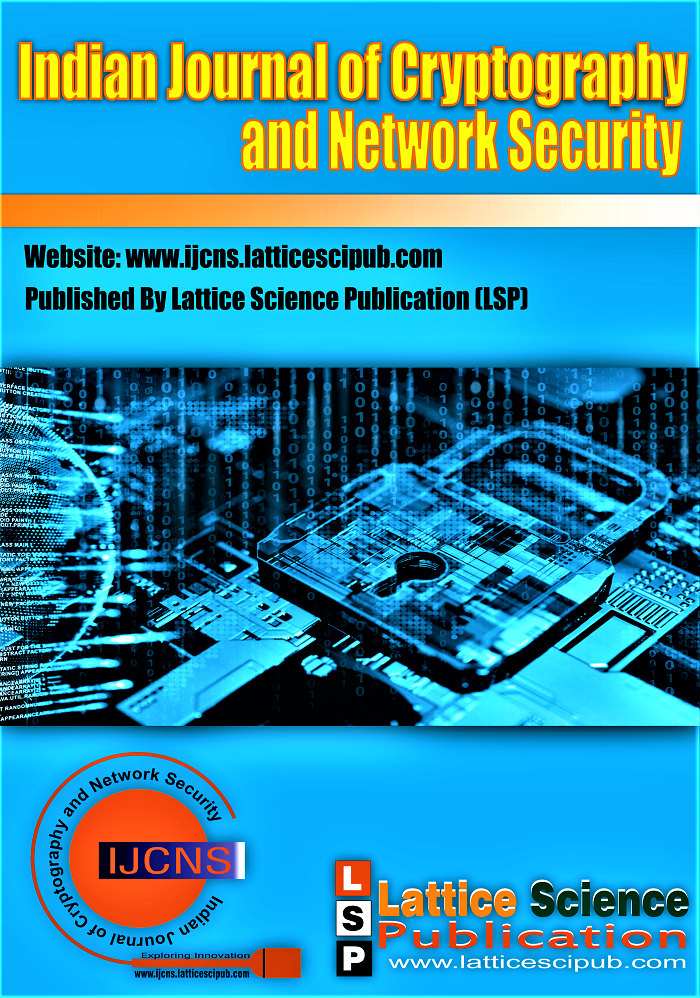A Network Intrusion Detection System Based on Categorical Boosting Technique using NSL-KDD
Main Article Content
Abstract
Massive volumes of network traffic & data are generated by common technology including the Internet of Things, cloud computing & social networking. Intrusion Detection Systems are therefore required to track the network which dynamically analyses incoming traffic. The purpose of the IDS is to carry out attacks inspection or provide security management with desirable help along with intrusion data. To date, several approaches to intrusion detection have been suggested to anticipate network malicious traffic. The NSL-KDD dataset is being applied in the paper to test intrusion detection machine learning algorithms. We research the potential viability of ELM by evaluating the advantages and disadvantages of ELM. In the preceding part on this issue, we noted that ELM does not degrade the generalisation potential in the expectation sense by selecting the activation function correctly. In this paper, we initiate a separate analysis & demonstrate that the randomness of ELM often contributes to some negative effects. For this reason, we have employed a new technique of machine learning for overcoming the problems of ELM by using the Categorical Boosting technique (CAT Boost).
Downloads
Article Details

This work is licensed under a Creative Commons Attribution-NonCommercial-NoDerivatives 4.0 International License.
How to Cite
References
W. Lee, S. J. Stolfo, and K. W. Mok, “A data mining framework for building intrusion detection models,” in Proceedings of the 1999
IEEE Symposium on Security and Privacy, pp. 120–132, USA, May 1999.
H. P. Sasan and M. Sharma, “Intrusion detection using feature selection and machine learning algorithm with misuse detection,” International Journal of Computer Science and Information Technologies, vol. 8, no. 1, pp. 17–25, 2016.
J. E. Díaz-Verdejo, P. García-Teodoro, P. Muñoz, G. Maciá- Fernández, and F. De Toro, “A Snort-based approach for the development and deployment of hybrid IDS,” IEEE Latin America Transactions, vol. 5, no. 6, pp. 386–392, 2007.
P. Mishra, V. Varadharajan, U. Tupakula, and E. S. Pilli, “A Detailed Investigation and Analysis of using Machine Learning Techniques for
Intrusion Detection,” IEEE Communications Surveys & Tutorials, pp. 1–1, 2018.
N. V. Patel, N. M. Patel, and C. Kleopa, “OpenAppID - application identification framework next generation of firewalls,” International
Conference on Green Engineering and Technologies (IC-GET), pp. 1– 5, 2016.
V. Bontupalli and T. M. Taha, “Comprehensive survey on intrusion detection on various hardware and software,” National Aerospace and
Electronics Conference (NAECON), pp. 267–272, 2015.
J. Shen, J. Xia, Y. Shan, and Z. Wei, “Classification model for imbalanced traffic data based on secondary feature extraction,” IET Communications: IET Journals, vol. 11, no. 11, pp. 1725–1731, 2017.
W. L. Al-Yaseen, Z. A. Othman, and M. Z. A. Nazri, “Multi-level hybrid support vector machine and extreme learning machine based
on modified K-means for intrusion detection system,” Expert Systems with Applications, vol. 67, pp. 296–303, 2017.
K. Goeschel, “Reducing false positives in intrusion detection systems using data-mining techniques utilizing support vector machines, decision trees, and Naive Bayes for off-line analysis,” Southeast Con 2016: IEEE, pp. 1–6, 2016.
D. Gupta, S. Singhal, S. Malik, and A. Singh, “Network intrusion detection system using various data mining techniques,” International
Conference on Research Advances in Integrated Navigation Systems (RAINS): IEEE, pp. 1–6, 2016.
P. Ravi KiranVarma, V. ValliKumari, and S. Srinivas Kumar, “A Survey of Feature Selection Techniques in Intrusion Detection System: A Soft Computing Perspective,” in Advances in Intelligent Systems and Computing, Singapore: Springer Singapore, vol. 710, pp.
–793, 2018.
Y. Li, B. Fang, L. Guo, and Y. Chen, “Network anomaly detection based on TCM-KNN algorithm,” 2nd ACM symposium on Information, no. 6, pp. 13-19, 2007.
H. He and E. A. Garcia, “Learning from imbalanced data,” IEEE Transactions on Knowledge and Data Engineering, vol. 21, no. 9, pp.
–1284, 2009.
Y. Dhote, S. Agrawal, and A. J. Deen, “A Survey on Feature Selection Techniques for Internet Traffic Classification,” International
Conference on Computational Intelligence and Communication Networks (CICN): IEEE, pp. 1375–1380, 2015.
N. P. Shetty, “Using clustering to capture attackers,” International Conference on Inventive Computation Technologies (ICICT): IEEE,
vol. 3, pp. 1–5, 2016.
N. Srivastav and R. K. Challa, “Novel intrusion detection system integrating layered framework with a neural network,” in Proceedings
of the 2013 3rd IEEE International Advance Computing Conference (IACC), vol. 35, no. 2, pp. 682–689, 2013.





